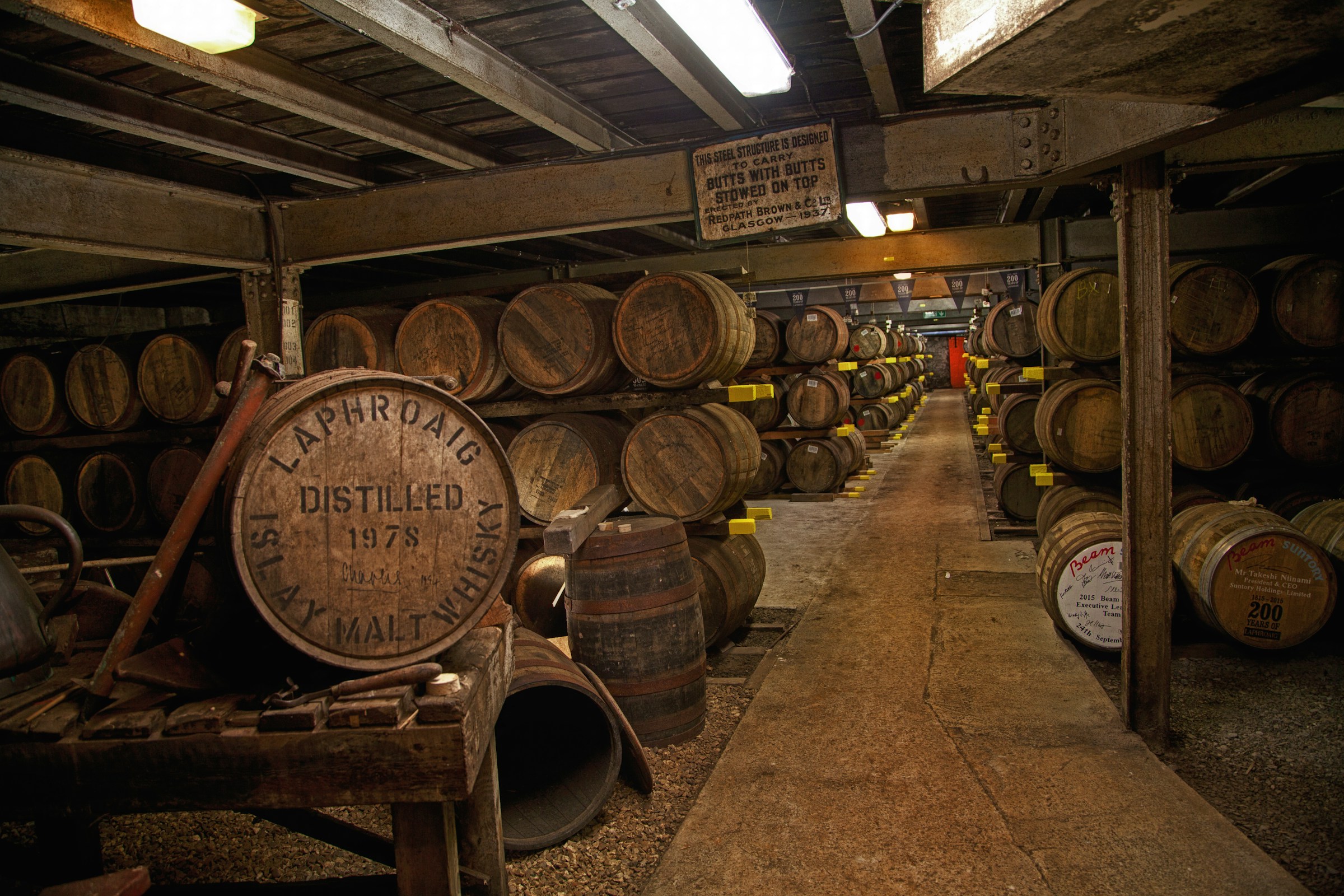The name whisky comes from the Scottish Gaelic “uisge-beatha“, which literally means “water of Life”. The term is used to describe spirits made of fermented mash of grain (most commonly barley, but other types are used as well) that have aged in wooden casks (traditionally oak, though the last few decades distilleries have experimented with other types of wood as well).
Classifications
Malt whisky is made exclusively from malted barley, while blended whisky generally will be a mix of both malt and grain. Single malt means that the whisky originates from the same distillery, though not necessarily the same cask, or even the same year. In this way, the distillery can guarantee a consistent taste. Single-cask does mean the spirit comes from a single cask. Blended malt (formerly known as Vatted malt) is basically a mix of different Single Malt whiskies (not necessarily from the same distillery). Finally, cask strength is a term to indicate the whisky came straight from the cask, rather than going through the usual process of dilution, where spring water is used to water down the product to roughly 40-45% alcohol.
Distillation
The process of distilling is a long and traditional one. However, when one truly wants to appreciate the complexity of whiskies, it is key to understand the different stages that create a whisky, and that give it its unique flavour and body. In order to learn more about those phases, see our page about distilling whisky.
Tasting
As mentioned on the front page, your senses will play a major part while drinking any spirit. Differences between various whiskies can be identified by vision, smell, and of course taste.
Should you wish to learn more about the different ways whiskies influence your senses, please check out our page about how your senses can guide you while you enjoy a dram.
Whisky producing countries
- Scotland
- England
- Ireland (whiskey)
- Wales
- Canada
- United States (typically bourbon and rye)
- Japan
- Nordics
- Other
